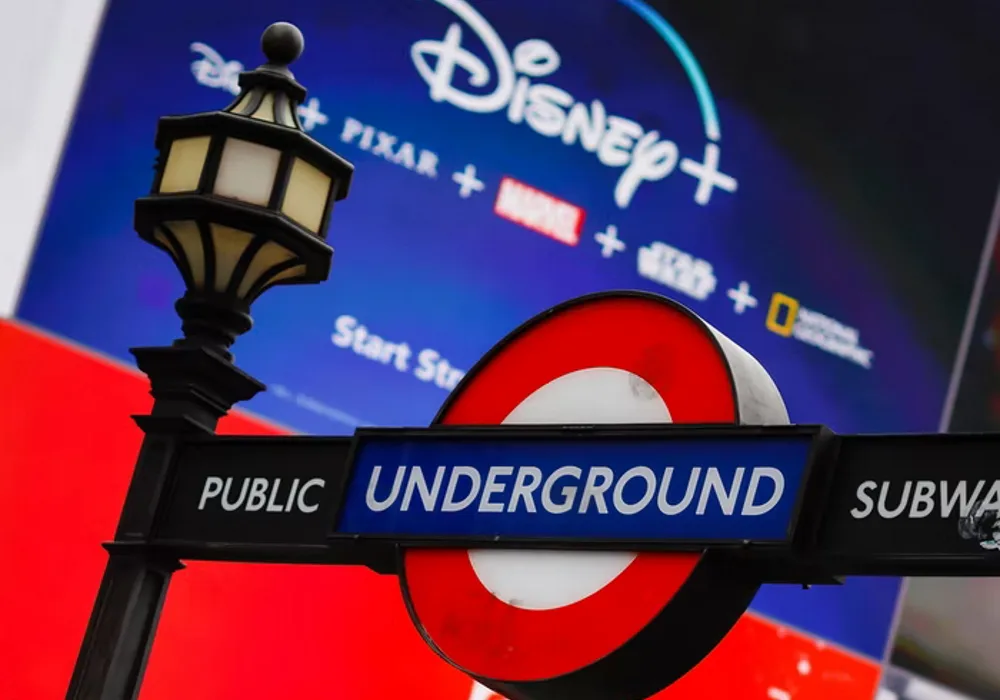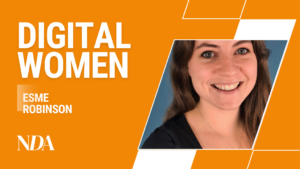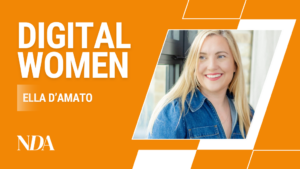UK marketing budgets are continuing to grow at a strong pace, but the economic difficulties facing the world mean that companies aren’t as confident about the future, according to e the latest IPA Bellwether Report.
We’ve gathered comments from marketing experts from across the industry, including Bluestripe Communications (owned by Bluestripe Group, owner of NDA) clients and other industry executives.
Charlie Brookes, Director of Revenue, Octave Audio
“While the latest IPA Bellwether suggests a drop in audio ad spend in Q2, the latest IAB UK figures show that digital audio is booming across areas such as streaming and podcasting. With marketing budgets reduced, advertisers need to ensure they are tailoring messages and targeting with more precision. This means first-party data strategies need to be strengthened to ensure the right audiences are being reached in the right environments.
“Additionally, advertisers can look at ways to engage audiences’ attention. Interactive ads are a great way to do this, from encouraging users to perform an action such as shaking the device they are listening on, to getting the listener to respond to an ad to find out more information or even make a purchase. As the digital audio industry continues to evolve, marketing budgets need to work smarter, not harder to be effective.”
Nick Reid, SVP & Managing Director EMEA, DoubleVerify
“It’s positive to see that UK marketing budgets have been revised up for Q2. However, with IPA Bellwether forecasting a drop in ad spend and a dramatic fall in financial prospects, the industry must build resilience and protect its investments in the face of strong economic headwinds.
“The need to manage and drive media quality, as well as ensure that every penny invested reaches the right audience, in a fraud-free, brand suitable and viewable environment, is more important than ever. Measuring media quality is critical, but using such data in pre-bid environments, across all channels, to drive better business outcomes is where brands and agencies must focus. With macroeconomic conditions meaning advertising budgets are under increasing pressure, it’s crucial that investments are not only secure, but bought on the baseline of an authentic ad and deliver meaningful and productive business outcomes.”
Heather Lloyd, Head of Product Marketing, Nano Interactive
“It is heartening to see that marketing budgets are continuing to grow in the latest IPA Bellwether report. That said, marketers are continuing to struggle with the challenges of measurement as we get nearer to the deprecation of third-party cookies.
“The reality is, we are living in a world where the path to purchase is far more fragmented and the average person is estimated to be exposed to 4,000 commercial messages a day. As a result, working towards the opportunity to see (Viewability), no longer goes far enough and a better understanding of the attention that was likely paid to the ad is much more significant.
“Indeed, this is why attention is so important right now and one way to do this is to look at time-in-view (TIV) which is defined by the length of time a creative is in view for and how this correlates to uplifts in key brand metrics. A longer time-in-view means the user has more quality time engaging with the ad message, which in turn generates higher uplifts in brand metrics.
“Ultimately, attention has the potential to be one of the key defining metrics for the industry but we need to come together to test and learn to find a clearer definition. And once this has been achieved, we will all be able to reap the benefits of this new privacy-first advertising era.”
Elliott Millard, Head of Planning, Wavemaker UK
“We all know that the cost-of-living crisis is impacting consumer spending, so a decay in forecast marketing growth is unsurprising. It’s easy at times like this to dust off a copy of IPA’S report Advertising in a downturn (which is excellent), but in the same way that the impact of Covid didn’t play out quite like a recession, this will likely not play out like a recession either. Not only does the current climate, such as high inflation and high employment, not indicate a ‘normal’ recession, but so many other factors are at play in business and marketing. Consider the level of risk to the supply chain, the demand pool and the effectiveness headroom given the rising costs of many media channels.
“The complexity of this landscape means a singular approach will not be fit for purpose. We will need a framework to help understand firstly, how much risk a business is carrying. Second, the expansive role that marketing will need to play, for example, supporting supply chain agility and flexibility. And finally, the opportunities that may exist, such as how the demand pool is growing or shrinking and an assessment of the competitor landscape.
“For some organisations, the old rules of 2008 will hold true – keep budgets high, take advantage of any reduced costs, retain TOMA, go long term and lead on brand. But for some, learning hard into short-termism will actually be the right thing. Let’s face it, if a business is at risk, then all the brand equity in the world is less interesting than sales. Understanding how we apply the early warning signs that the Bellwether report gives us and adapting our strategy accordingly to each business will be key to delivering profitable growth for clients.”
Isabella Jenkins, Agency Partner, Permutive
“It was great to see marketing budgets remain consistent in Q2. However, to ensure advertisers are capturing consumer attention, and making the most of their budgets, they need to be conscious of the changes happening around them. Ad spend forecasts for the next couple of years are being cut, and in an industry facing dwindling consumer trust, advertisers need to create a new responsible digital ecosystem.
“With reducing media budgets, advertisers need to work with partners that can provide consented first-party data and an opportunity to build one-to-many relationships with publishers. Brands have a truly powerful opportunity to create and scale meaningful ad experiences with consumers, while protecting their privacy.”
Philippa Snare, SVP EMEA,The Trade Desk
“It’s important that marketers recognise this apparent resilience in budgets for what it is – a red herring against the backdrop of the cost-of-living crisis. With budgets set to tighten for the rest of the year, it’s imperative that marketers look beyond short-termism and ensure that spend is invested smartly – and that means on the open internet over the walled gardens. Not only is this where investment can be best understood and optimised, it’s also where advertisers’ existing and prospective customers are spending the majority of their time. And that’s partly because of the superior experience it offers consumers, especially as we upgrade from an opt-out internet to an opt-in internet. Despite the government advising revising marketing budgets, economies, brands and businesses that invest during downturns are the ones that bounce back quicker ahead of those who don’t. This will only come into sharper focus as we navigate the challenges of this year and beyond.”
Dominic Woolfe, UK CEO, Azerion
“The latest IPA Bellwether report is promising in terms of marketing budgets staying consistent, especially with increased investment in face-to-face events which is great to see.
“However, the industry is really starting to feel the effects of the cost of living crisis as advertisers will be under immense pressure to deliver to the demands of their brands in an overcrowded marketplace. However, we remain confident that advertisers can bounce back from this. Ultimately, those that continue to adapt to ever changing consumer behaviour by prioritising creativity and brand performance will achieve the most success in the coming months.”
Jake Stott, CEO, Hype Partners
“With persistent high inflation, we expect this to negatively impact household spending on many consumer goods.
“Reduced consumer spending is likely to lead to lower conversion rates on paid media for some brands. However, CPAs could remain constant with massively reduced demand for ad space. Ad space should be drastically cheaper across all mediums due to the largest tech and consumer brands pulling back spend.
“The hot summer weather is likely to increase OOH spend and likewise effectiveness perhaps leading to a decrease in social media effectiveness as less people sit inside and scroll newsfeeds. Event marketing will also be more effective.
“People will seek uplifting content if the economic downturn persists as an escape from everyday problems. Some industries and companies who had very strong Covid 19 sales or recent fundraises will be able to capitalise on the misfortune of others during this time. These companies will emerge very strongly in 12-24 months.
“Finally, companies will need to realign budgets and test new channels like TikTok and Metaverse, as other channels like Facebook, Netflix… decrease in popularity.”
Russell Pedrick, Director of Digital, Wireless
“Whilst the latest IPA Bellwether report cites that video spend has increased, it has also revealed that audio spend has been somewhat reduced in Q2. That said, we know that digital audio is the fastest growing medium in digital advertising, as evidenced in the latest IAB figures.
“This growth is a result of a seismic shift in consumer behaviour, accelerated even faster over the pandemic, with digital consumption increasing across multiple platforms. Podcasts, for example, have become the fastest growing advertising medium, enabling brands to reach young and affluent audiences listening on their own, therefore allowing direct integrated 1-2-1 interactions.
“To succeed in today’s complex media ecosystem, brands need to be present across all touchpoints to build familiarity, consideration and to drive action. In fact, research has shown that using online display alongside radio and newsbrands can have significant uplifts for brands when activated together.
“In the coming months, we expect that digital audio and video will continue to boom, especially with key events such as the World Cup starting in the run up to Christmas. And with budgets potentially tightening, brands are likely to be placing more emphasis on quality and trusted environments for their ad placements.”
Sam Budd, CEO, Buddy Media
“We’ve seen a huge surge in live activations in 2022, arguably off the back of two years of pandemic where people have been isolated and had little to no meaningful connections in their day to day lives. There has also been a build-up in marketing spend for certain brands, particularly in the retail, tech and gaming sectors. So, we’ve been seeing heightened levels of activity with key markets that prospered during the pandemic. As we are moving through the year, I do totally agree that we are starting to see a slowdown and a concern around the economic impact that the pandemic and the war in Ukraine is having.
“Therefore, budgets are not only being reduced, but they are also having a hard KPI set against them. How we’ve responded to that at Buddy is to ensure that every activation has a hard KPI metric against it, either sales, downloads, or lead generation that can be harnessed and associated directly to the activation that we’re delivering – something we did anyway but is now at the fore.
“We’re also very conscious of how we can deliver meaningful, highly immersive and engaging events, that are digital first. These must be amplified cross market and online to maximise the potential ROI that they can achieve – multiple touchpoints.
“Moving forward, I think agencies and brands need to have nimble, strategic and performance orientated activations with clear outcomes. I cannot see any signs of this slowing down from the current briefs and opportunities on the table, especially with specific brands that are prospering and have prospered in the last few years.
“On a final note, the brands that attack this market that stay current and find innovative ways to meaningfully connect with people at a time when they are seeking it. will inevitably come out of this slowdown, stronger with greater brand loyalty and customer bases than their competitors.”
Harry Williams, Senior Marketing Manager, A Million Ads
“It’s brilliant to see that total marketing budget growth has stayed resilient in Q2. While the latest report shows that audio investment has decreased, audio is still the fastest-growing form of advertising and we remain confident that this channel will continue to grow over the next year.”
“With lots of innovations happening in the audio space right now, brands should be capitalising on this to build closer connections with target audiences. An effective way to do this is by utilising 3D immersive audio advertising. Designed to pan sound three-dimensionally around the listener, it can take them on a sensory journey. Combined with contextual data points such as the time of day, weather or location, brands can develop the personalised 3D audio experience further. To succeed in the months ahead, it is vital for brands to utilise these innovations in audio advertising to help create more effective ads. In turn this allows brands to make their marketing budgets go further while connecting with their target audiences on a more personal level.”
Matt White, VP EMEA, Quantcast
“We find ourselves in the midst of a perfect storm. After the rollercoaster of the last couple of years, I believe the industry will have the tools to navigate through this uncertain economic climate. The UK is experiencing a huge rise in the cost of living, but the buffer provided by the lack of spending in the previous two years could prove favourable for retailers and advertisers alike, especially savings on experiential items.
“September is a big time for our industry. New tech releases including the new iPhone, and new cars are released, pumping a huge amount of revenue into advertising. Industries such as travel are still seeing an enormous boost, riding the wave of pandemic cabin fever and I don’t see this fading. We’re cautiously optimistic about the next quarter, but it would be foolish to be unaware of how this turbulent economy can touch every industry.”
Matt Nash, UK Managing Director, Scibids
“With ad spend budgets set to decline, advertisers need to ensure now more than ever that their campaigns are delivering ROI. Indeed, the death of the cookie is challenging brands to reimagine their digital advertising and powerful artificial intelligence (AI), which combines both contextual and first-party data, is one way to boost campaign performance.
“Contextual signals based on anonymous interest cohorts are quickly becoming the best data point to maximise traditional metrics like CPA, CPV and newer metrics like attention. These signals are privacy-compliant as they do not track users between websites or capitalise on personal data. Additionally, these signals eliminate the issue of consumers being shown the same ad repeatedly when the likelihood to convert is not present. Indeed, AI can be used here to build bespoke data sets which constantly evolve and have the ability to reallocate budgets in real time. Together, the two achieve campaign efficiency at scale, garnering user attention when brands need it the most.”
Insights from more industry executives can be read here.












